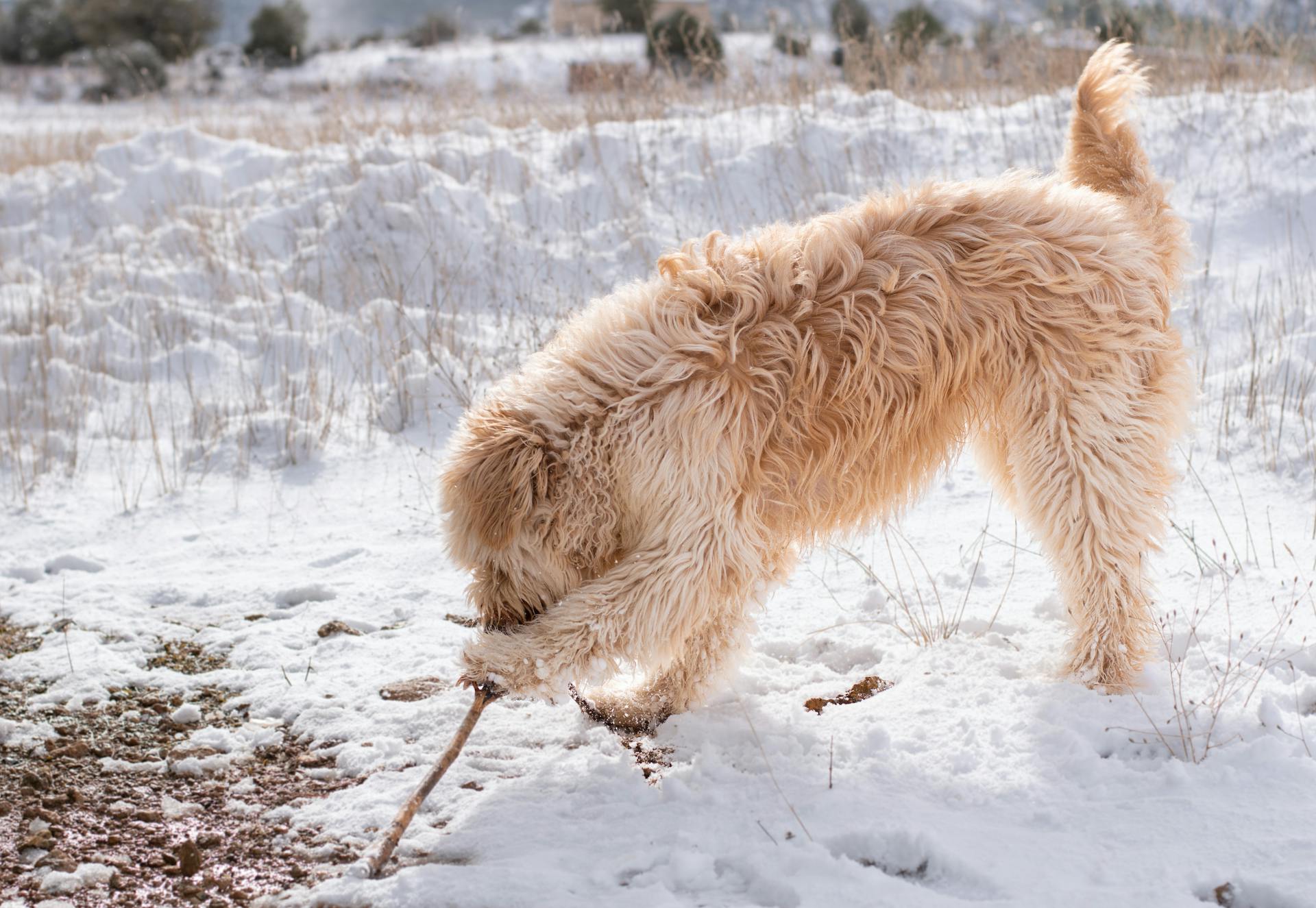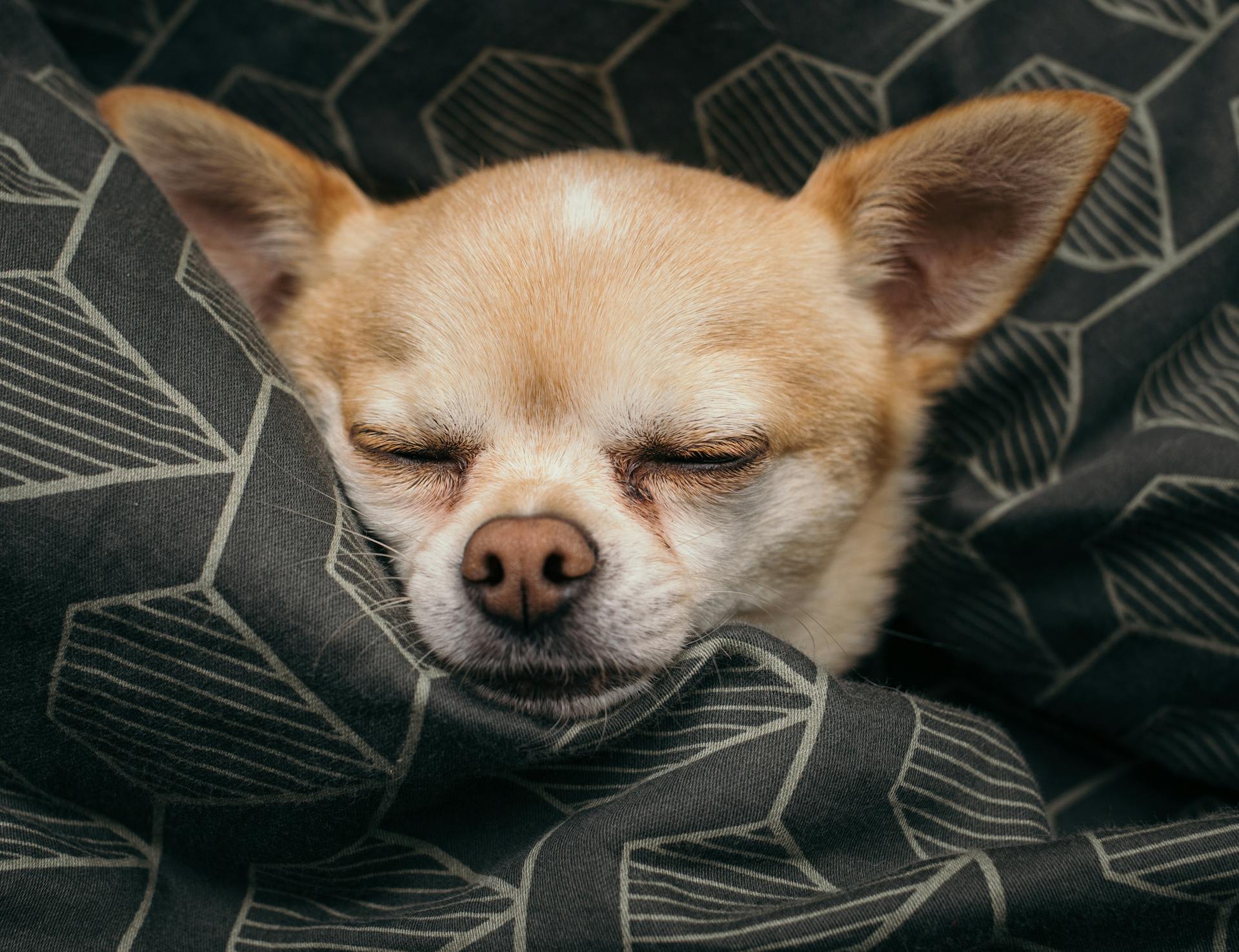
Irish Setters are known for their beautiful, thick coats, but they also shed heavily, especially during seasonal changes.
Irish Setters shed their coats twice a year, in the spring and fall, due to changes in daylight and temperature.
This shedding is a natural process, but it can be overwhelming for owners who are not prepared.
Irish Setter Basics
The Irish Setter is a medium-sized breed, typically standing between 25 to 27 inches tall.
They can weigh anywhere from 60 to 70 pounds, making them a sturdy yet athletic companion.
Their coat is medium in length, with feathering on their ears, chest, legs, and tail, adding to their elegant appearance.
With a lifespan of 12 to 15 years, Irish Setters are a long-term investment for any dog lover.
Breed Overview
Irish Setters typically weigh between 55-70 pounds.
These energetic dogs are perfect for active families who enjoy outdoor activities.
They thrive in houses with yards where they can run around and play.
Irish Setters are a spirited mix of fun, seriousness, loyalty, and stubbornness.
They love adventure and outdoor activities, but can also be intelligent and eager to please.
Their medium length coat requires some maintenance, but it's worth it for their beautiful feathering on ears, chest, legs, and tail.
Irish Setters are generally a healthy breed, with a lifespan of 12-15 years.
Origin
The Irish Setter is a breed with a rich history, and understanding its origin is key to appreciating its unique characteristics.
The exact origin of the Irish Setter is not known, but it's believed to have been developed from a mix of English and Gordon Setters, Spaniels, and Pointers. This blend of breeds likely occurred in Ireland.
Their ancestors had coats of a combination of red and white fur, not solid red or mahogany like the Irish Setters we know today. The solid red Irish Setter is said to have originally appeared during the 18th century in Ireland.
Explore further: Irish Setter Origin
The Irish Setter was developed for hunting, specifically for locating and "pointing toward" prey birds in the uplands. They excelled at this job due to their ability to traverse extreme terrains and their amazing scent receptors.
The breed first set paw on land in the United States during the early 19th century.
Coat and Grooming
Irish Setters have a medium-length coat that's typically rich red, but it's short and thin on their heads and forelegs.
Their ears, chest, tail, and back legs have long feathered hair, giving them a luxurious look. This hair is fine and free flowing, so it can get knotted and matted if not properly cared for.
Irish Setters develop thick undercoats for winter to stay warm, which contributes to their shedding. They shed less during certain seasons and more during others, but they do shed all year long.
Regular brushing is essential to keep their coats looking supple and healthy. A soft-bristle or pin brush used two or three times a week should be sufficient.
Bathing isn't necessary unless obvious dirt and mud have built up in the coat. Some owners choose to trim their dog's hair to keep it looking its best.
Their undercoat becomes heavier in winter and sheds as spring approaches. During this time, it's best to ramp up grooming with a slicker brush to remove loose hair and prevent fur balls.
Caring for an Irish Setter's coat isn't as time-consuming as you might think. A couple of brushing sessions per week, along with an occasional bath, can keep their coat looking great.
Shedding and Care
Brushing your Irish Setter daily is essential to keep shedding to a minimum. This will help prevent loose hairs and dander from spreading throughout your home.
You can also consider regular trims to reduce the amount of hair and dander that falls off your dog. Trimming the long hair on your Irish Setter's coat can make shedding less overwhelming.
Taking your Irish Setter to the groomer once or twice a month can also help cut down on shedding. The groomer will take care of all the loose hairs and ensure that your pup is set up for easy brushing between visits.
Vacuuming and sweeping regularly is crucial to manage shedding. Aim to sweep and vacuum every other day, or more often if needed, for optimal results.
Here are some tips to keep in mind:
- Brush your Irish Setter daily to keep shedding under control.
- Consider regular trims to reduce shedding.
- Take your Irish Setter to the groomer once or twice a month.
- Vacuum and sweep regularly to manage shedding.
Owning an Irish Setter
Irish Setters are a high-energy breed that requires regular exercise to stay happy and healthy.
They need at least 30 minutes of exercise per day, which can be a combination of walks, runs, and playtime.
Their intelligence and trainability make them a great breed for active families or individuals.
Irish Setters are prone to certain health issues, such as hip dysplasia and eye problems, so regular veterinary check-ups are a must.
Their short coats require regular grooming to prevent matting and tangling.
Overall, owning an Irish Setter can be a rewarding experience for the right owner.
You might like: How Much Exercise Do Labrador Retrievers Need
Temperament & Intelligence
The Irish Setter is never boring, lazy, or sensitive when it comes to facing challenges and excitement throughout their lives.
Irish Setters are smart and fun-loving, making them entertaining to be around, especially during outdoor activities like hiking or swimming at the beach.
Many Irish Setters prefer spending their time walking, hiking, hunting, camping, or swimming, and they love to explore new places.
Some Irish Setters are more independent and like to keep to themselves, while others enjoy spending time with their immediate family and household companions.
Irish Setters display a unique combination of behaviors and temperaments, making each one special and interesting to get to know.
Suggestion: When Is Best to Breed a Dog
Owning a Dog
Owning a dog is a big responsibility, and it's essential to consider the costs involved. The initial cost of buying an Irish Setter can range from $1,000 to $3,000.
Irish Setters require regular grooming to prevent matting and tangling of their fur, which can be time-consuming and expensive. According to the article, grooming costs can add up to $1,000 per year.
Related reading: Shiba Inu Reach 1 Cent
Irish Setters are high-energy dogs that need regular exercise to stay happy and healthy. The article states that they require at least 30 minutes of exercise per day, which can be a challenge for busy owners.
Irish Setters are prone to certain health issues, including hip dysplasia and eye problems. According to the article, hip dysplasia can be a significant concern for Irish Setters, with some dogs requiring surgery to alleviate the condition.
Irish Setters are loyal and loving companions that thrive on attention and interaction. The article notes that they are often described as " Velcro dogs" because of their tendency to stick close by.
For more insights, see: Hip Dysplasia Bernese Mountain Dog
Adopting or Buying a Dog
If you're considering bringing an Irish Setter into your life, you'll want to start by checking with local rescue groups. Irish Setter rescues are dedicated to finding new homes for these beautiful dogs.
You can find reputable rescue organizations through the Irish Setter Club of America Rescue Organization or Save Our Setters Rescue. These groups specialize in finding forever homes for Irish Setters in need.
If you're set on getting an Irish Setter puppy, look for a breeder who provides health certifications for their puppies. The National Breed Club recommends a breeder provide the following health certifications:
- Optigen Testing Results for Progressive Retinal Atrophy
- OFA Certification of Hips
- Eye Exam for CERF
- OFA Thyroid Panel
You can also check the American Kennel Club Breeder Listing or the Irish Setter Club of America Breeder Listing to find reputable breeders in your area.
On a similar theme: American Kennel Club Lancashire Heeler
Frequently Asked Questions
What are the disadvantages of an Irish Setter?
Irish Setters can be challenging to care for due to their high energy levels, stubbornness, and separation anxiety. They also require regular grooming to prevent matting of their feathered coat.
Are Irish Setters hypoallergenic?
No, Irish Setters are not hypoallergenic due to their shedding, which produces pet dander. If you're allergic, consider this before bringing an Irish Setter into your home.
Are red setters high maintenance?
Yes, Irish Setters require regular grooming to maintain their coat's condition. Their high maintenance coat needs attention to stay in top shape.
Sources
- https://wahlusa.com/pet-grooming/product-selector/dog/irish-setter
- https://www.hepper.com/how-much-do-irish-setters-shed/
- https://www.dogster.com/lifestyle/get-to-know-the-irish-setter-an-energetic-clever-companion
- https://www.thesprucepets.com/irish-setter-dog-breed-profile-4775999
- https://dogtime.com/dog-breeds/irish-red-and-white-setter
Featured Images: pexels.com


